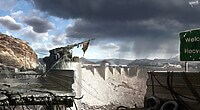The Barnes and Noble Nook Glowlight first became commercially available October 2013. This was the companies second generation e-reader that featured a front-lit display, allowing people to read e-books in the dark. By today’s standards this device is hopelessly out of date and most of Nooks competitors have all released a slew of new e-readers. How would you change the Nook?
The Barnes and Noble Nook Glowlight features a six inch IR touchscreen display with a resolution of 1024 X 758-pixel and 212 PPI. This is a huge upgrade from the previous generation Nook that only had 800×600 for the resolution.
Underneath the hood is a 800 MHZ processor and 256 MB of RAM. There are 4 GB of internal memory that you can use to store purchases made from the bookstore. When you take it out of the box for the first time and power it on, there is only 2.1 GB available. If you like to load in your own PDF Files or eBooks there is only 500 MB reserved for user files. Unlike prior models of the Nook line of e-Readers, there is no expandable memory via SD in the Nook Glowlight.
The e-reader landscape has dramatically changed since Barnes and Noble last made an e-reader. The Amazon Kindle Voyage and Kobo Glo HD lead the pack in terms of overall screen resolution and clarity. They both employ very modern e-paper called Carta. Indie companies such as Onyx, Icarus, Boyue, and Energy Sistem all have Android driven devices, allowing customers to install their own apps. Not to mention there is plenty of advances in E-paper, such as Fina and Mobius.
What would you like to see out of a new Nook e-Reader? Would you like them to stick with the standard six inch device, or try something a bit bigger? Would you like to see a super high resolution display or use ultra modern e-paper? Would you like to see gimmicks like a waterproof e-reader, open Android or an e-ink camera? In essence, what would make you buy a Nook for the first time or switch to the brand? Its your call.
Michael Kozlowski is the editor-in-chief at Good e-Reader and has written about audiobooks and e-readers for the past fifteen years. Newspapers and websites such as the CBC, CNET, Engadget, Huffington Post and the New York Times have picked up his articles. He Lives in Vancouver, British Columbia, Canada.

